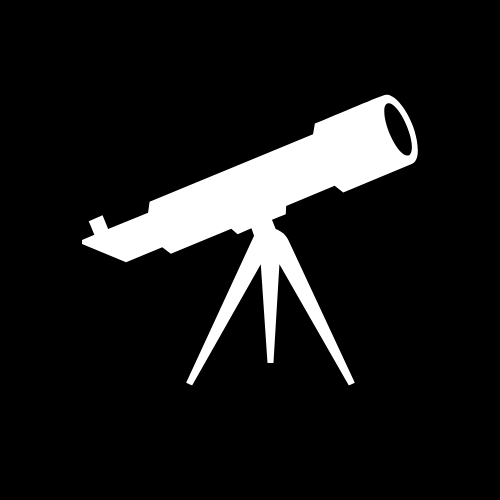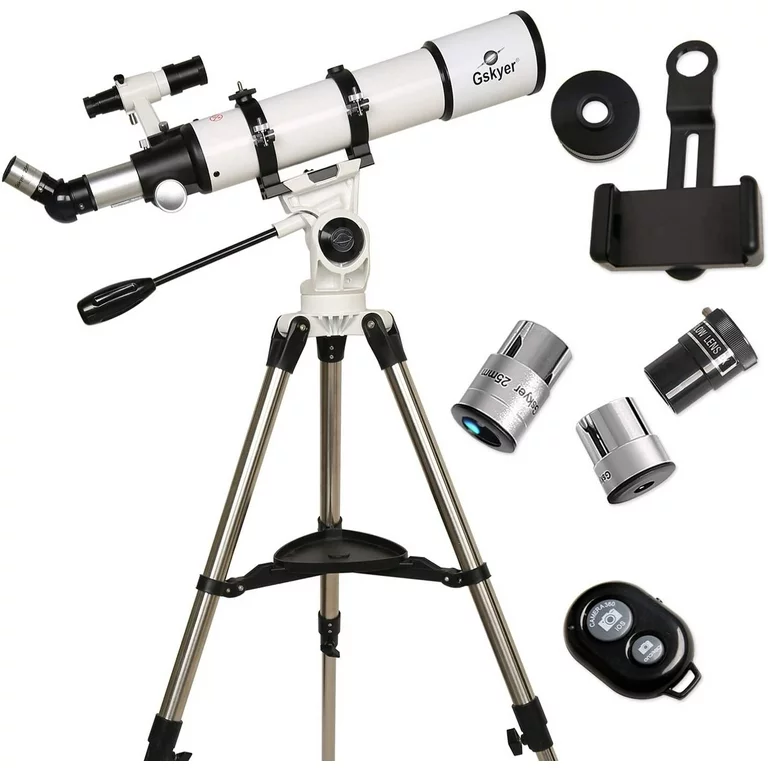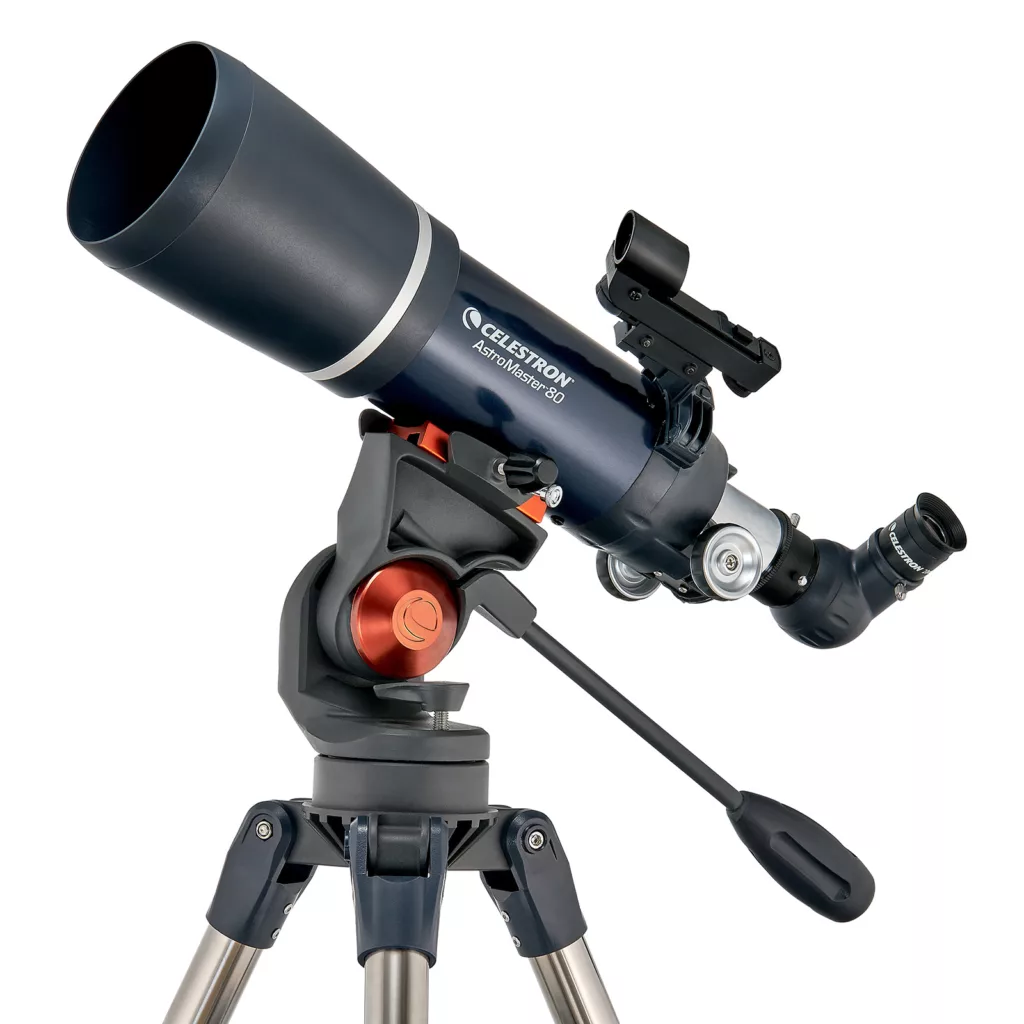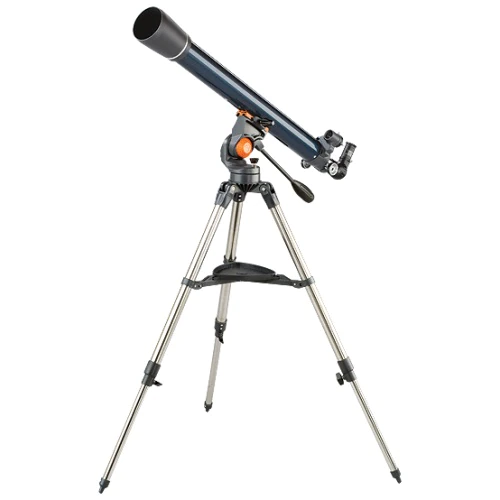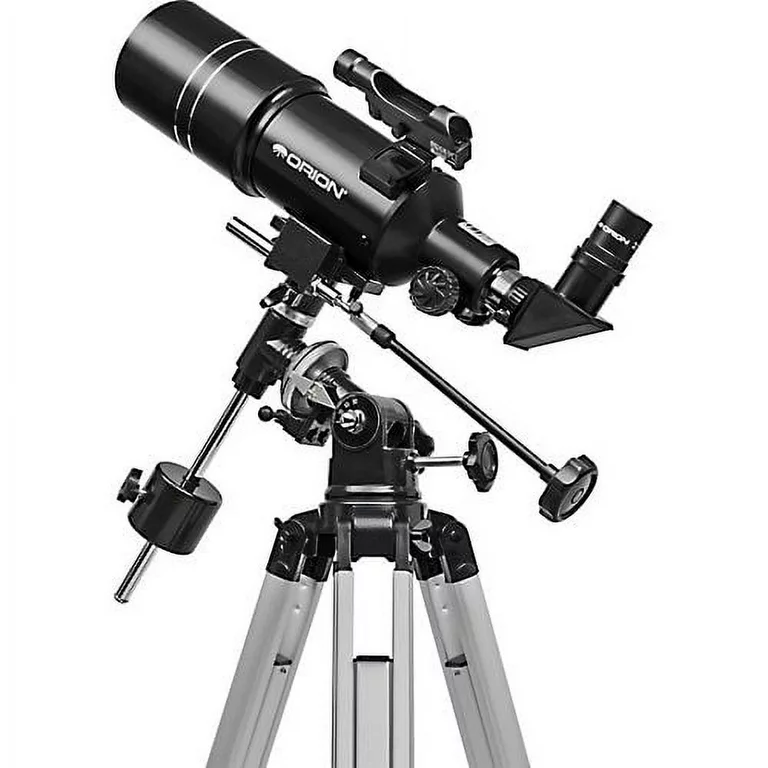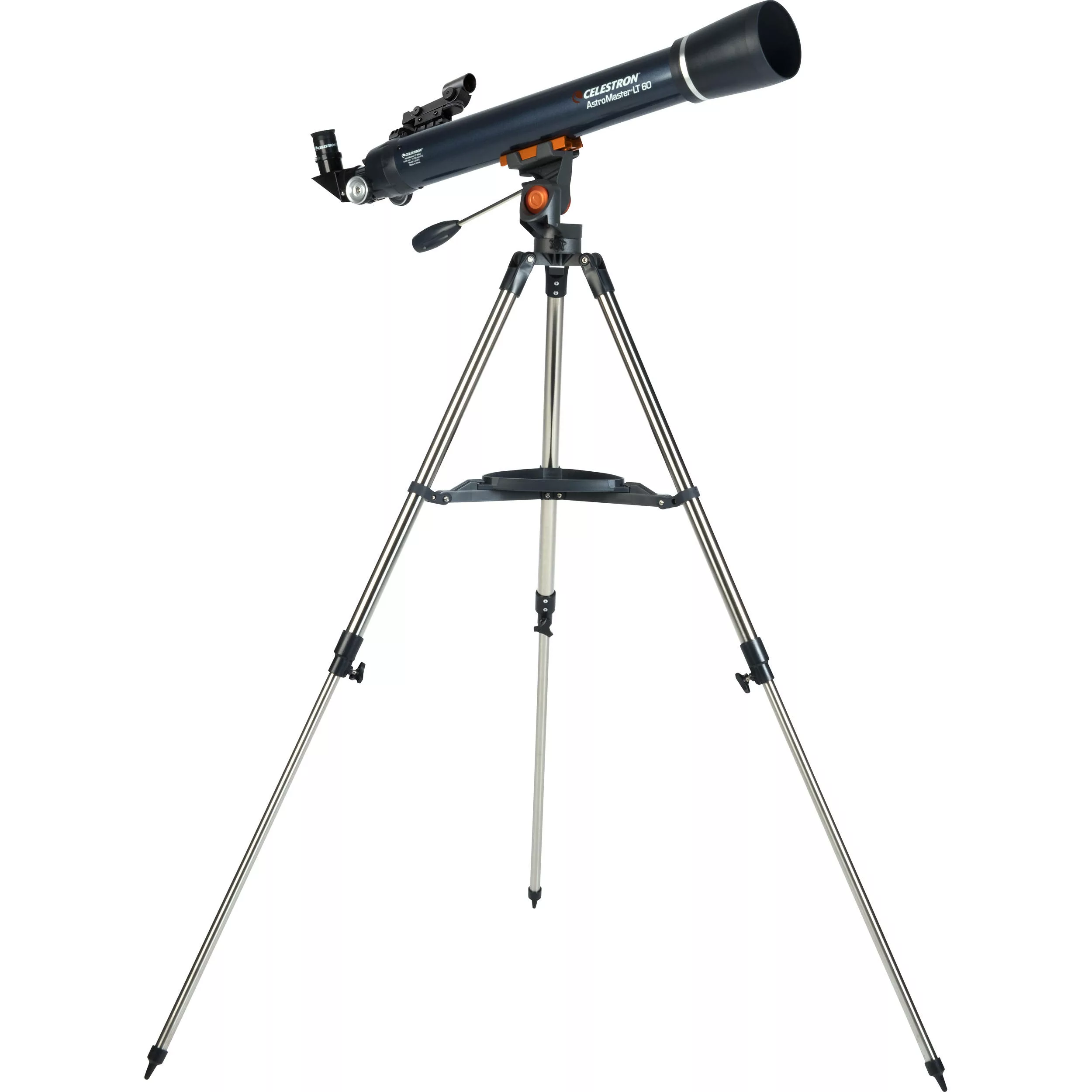5 Best Telescopes Under 300$
Gazing up at the night sky, one cannot help but feel a sense of wonder and curiosity about the vast universe that stretches beyond our planet. Stargazing is not just a hobby; it’s a journey into the mysteries of space, offering a unique blend of scientific learning and personal awe.
However, for many aspiring astronomers and night sky enthusiasts, the biggest hurdle is not in the sky, but in finding the right equipment. The quest for a quality telescope that doesn’t break the bank can be as challenging as spotting a distant nebula in a light-polluted city sky. With a plethora of options, each boasting different features and specifications, the task of selecting the perfect telescope becomes daunting.
Understanding this challenge, our mission is to light your path in this celestial quest. In this comprehensive guide, we delve into the world of affordable astronomy, bringing you the 5 Best Telescopes Under 300$. This carefully curated list is designed to cater to both novice stargazers and seasoned skywatchers, ensuring that a limited budget does not limit your journey through the stars. From refractors to reflectors, computerized systems to manual mounts, we’ve explored the galaxy of options to bring you telescopes that offer the best balance of quality, performance, and affordability.
Join us as we embark on this astronomical adventure, unveiling telescopes that open up the universe for exploration without emptying your wallet. Whether you’re a beginner eager to take your first glimpse of the Milky Way or an experienced observer looking to expand your celestial horizons, our guide is your telescope to the stars, all within a budget that suits you.
1. Gskyer Refractor Telescope AZ90600 – Best Overall
Description: The Gskyer Refractor Telescope AZ90600 stands out as the pinnacle of affordable astronomical equipment, earning its place as the best overall telescope under $300. This model is a testament to the perfect blend of quality and affordability, making it an ideal choice for both beginners and experienced stargazers. The telescope boasts a generous 90mm aperture, ensuring bright and clear views of celestial objects. The inclusion of three eyepieces (24x, 60x, 120x) offers versatile magnification options, allowing users to zoom in on distant stars or get a wide field of view of the night sky.
One of the standout features of the Gskyer AZ90600 is its large lens, which not only enhances image clarity but also brings out vibrant colors and intricate details, whether you’re observing celestial bodies during the day or at night. The robust stainless steel tripod provides a stable base for your celestial explorations, ensuring that your stargazing experiences are free from shakes and jitters. This telescope is not just a tool; it’s a gateway to the universe, offering an immersive experience that brings the wonders of space closer to home.
Specs Table
| Feature | Details |
|---|---|
| Aperture | 90mm |
| Eyepieces | 24x, 60x, 120x |
| Tripod | Stainless Steel |
| Special Features | Large Lens, Great Image Quality |
Pros & Cons
| Pros | Cons |
|---|---|
| Large 90mm aperture for bright, clear images | Instructions may be unclear, leading to longer assembly times |
| Includes three versatile eyepieces for varied magnification | |
| Durable and stable stainless steel tripod | |
| Exceptional image quality, both for day and night observations |
2. Celestron – AstroMaster 80AZS
Description: The Celestron AstroMaster 80AZS is a remarkable telescope that caters to both amateur astronomers and those with a more seasoned interest in the cosmos. Its 80mm aperture provides bright, clear views of celestial objects, making it an excellent choice for observing the moon, planets, and even some deep-sky objects like nebulae and star clusters. This model is particularly appreciated for its balance between optical quality and ease of use, making it a versatile option for a wide range of stargazers.
One of the standout features of the AstroMaster 80AZS is its compact and lightweight design, which does not compromise on performance. This design makes it an ideal telescope for those who value portability, whether for backyard observations or for carrying to darker skies away from city lights. The altazimuth mount offers smooth and accurate control, enhancing the viewing experience. This telescope is not just an instrument for viewing the night sky; it’s a tool for adventure, opening up a universe of exploration for its users.
Specs Table
| Feature | Details |
|---|---|
| Aperture | 80mm |
| Eyepieces | Included (specific magnifications may vary) |
| Mount | Altazimuth |
| Special Features | Compact and lightweight design, Easy-to-use altazimuth mount |
Pros & Cons
| Pros | Cons |
|---|---|
| Excellent clarity and brightness with an 80mm aperture | Limited magnification range compared to larger models |
| Portable and easy to transport, ideal for various observation locations | May require additional accessories for advanced observations |
| User-friendly, suitable for beginners and intermediate users | Not primarily designed for high-end astrophotography |
| Durable build quality ensures long-term use |
3. Celestron AstroMaster 70AZ Refractor Telescope – Best Value
Description: The Celestron AstroMaster 70AZ Refractor Telescope stands as a beacon of value in the world of astronomy, offering an exceptional balance between quality and affordability. This telescope is a prime choice for budget-conscious stargazers who do not want to compromise on their celestial viewing experience. With a 70mm aperture, it provides crisp and clear images. Making it perfect for observing the moon’s craters, Saturn’s rings, and other celestial wonders.
The AstroMaster 70AZ is renowned for its user-friendly design. Featuring smooth pointing and an easy setup that appeals to beginners and seasoned astronomers alike. This ease of use does not come at the expense of performance. The telescope includes two eyepieces (45x and 90x magnification), allowing for a range of viewing experiences, from wide-field stargazing to more focused observations of specific celestial objects. Its standard tripod offers a stable and reliable platform, ensuring steady views and hassle-free observations.
Specs Table
| Feature | Details |
|---|---|
| Aperture | 70mm |
| Eyepieces | 45x, 90x |
| Tripod | Standard |
| Special Features | Smooth Pointing, Easy Setup |
Pros & Cons
| Pros | Cons |
|---|---|
| Excellent value for money, balancing cost and quality | Smaller aperture may limit viewing of fainter objects |
| User-friendly with smooth pointing and easy setup, ideal for beginners | Some plastic components may affect durability |
| Versatile viewing with two eyepieces included | |
| Provides clear and crisp images, great for moon and planets |
4. Orion Observer 80ST
Description: The Orion Observer 80ST stands out as a top choice for enthusiasts who are passionate about wide-field viewing. This telescope is specifically designed to offer expansive views of the night sky. Making it perfect for observing large celestial objects like star clusters, nebulae, and wide swathes of the Milky Way. With an 80mm aperture, the Observer 80ST captures a substantial amount of light. Bringing distant stars and galaxies into clearer focus.
This model is particularly favored for its versatility and ease of use, appealing to both beginners and more experienced astronomers. Its short tube design not only makes it highly portable but also allows for quick and wide-field observations. Ideal for spontaneous stargazing sessions. The Observer 80ST is an excellent tool for those who wish to immerse themselves in the beauty of the night sky. Offering a window to the cosmos that is both broad and breathtaking.
Specs Table
| Feature | Details |
|---|---|
| Aperture | 80mm |
| Eyepieces | Included (specific magnifications may vary) |
| Mount | Altazimuth |
| Special Features | Short tube design for wide-field viewing, Portable and easy to handle |
Pros & Cons
| Pros | Cons |
|---|---|
| Ideal for wide-field astronomical viewing | May not provide the high magnification needed for detailed planetary observation |
| Portable and easy to transport, perfect for on-the-go stargazing | Smaller aperture limits its effectiveness in extremely dark skies |
| Suitable for beginners and experienced users alike | Additional accessories might be needed for a more comprehensive experience |
| Quick setup, allowing for spontaneous observation sessions |
5. Celestron AstroMaster LT 60AZ Refractor Telescope
Description
The Celestron AstroMaster LT 60AZ Refractor Telescope is a testament to Celestron’s commitment to quality and affordability in the world of astronomy. This telescope is an excellent choice for beginners and amateur stargazers who seek a balance between performance and ease of use. With its 60mm aperture, the AstroMaster LT 60AZ provides clear and crisp views of the moon, planets, and brighter deep-sky objects. Making it a perfect entry-level telescope for those starting their astronomical journey.
The telescope’s user-friendly design is highlighted by its quick and easy no-tool setup. Allowing you to get started with your stargazing sessions without any hassle. The smooth altazimuth mount makes it simple to point the telescope at celestial objects. While the pan handle control allows for precise movements, enhancing the overall viewing experience. The AstroMaster LT 60AZ is not just a tool for viewing the night sky. It’s a gateway to the wonders of the universe, offering an affordable and enjoyable way to explore space.
Specs Table:
| Feature | Details |
|---|---|
| Aperture | 60mm |
| Eyepieces | Included (specific magnifications may vary) |
| Mount | Altazimuth with pan handle |
| Special Features | Quick and easy no-tool setup, Pan handle control for smooth navigation |
Pros & Cons:
| Pros | Cons |
|---|---|
| Ideal for beginners with easy setup and use | Smaller aperture limits viewing capabilities for fainter objects |
| Affordable, making it accessible to a wide range of users | May require additional accessories for enhanced experience |
| Smooth altazimuth mount for easy navigation and tracking | Less suitable for advanced astrophotography |
| Compact and portable, great for casual stargazing and travel |
Buyer’s Guide – Choosing the Best Telescope Under $300
Embarking on the journey of selecting the right telescope under $300 can be as thrilling as the stargazing itself. However, with various models boasting different features, it’s crucial to understand what to look for. This buyer’s guide will help you navigate through key factors like aperture, telescope types, mount type, and computer features. Ensuring you make an informed decision that aligns with your astronomical aspirations.
Understanding Aperture:
- Key to Quality: The aperture, or the diameter of the telescope’s lens or mirror. Is fundamental in determining the quality of the images you’ll see. A larger aperture allows more light to enter, resulting in brighter and clearer images.
- Balancing Size and Portability: While a larger aperture is desirable, it often means a larger and less portable telescope. Consider how you plan to use the telescope – whether it’s from your backyard or requires traveling to darker skies.
Telescope Types:
- Refractors: Known for their long, slender design, refractor telescopes are excellent for viewing the moon and planets. They are generally low maintenance but can be more expensive per inch of aperture.
- Reflectors: These telescopes use mirrors and are usually more affordable and compact. They’re great for deep-sky viewing but may require occasional alignment (collimation).
- Compound Telescopes: Combining features of refractors and reflectors. These are versatile and often come with computerized options but can be pricier.
Mount Type:
- Stability is Key: The mount is as important as the telescope itself. A shaky mount can lead to frustrating viewing experiences.
- Altazimuth vs. Equatorial: Altazimuth mounts are simpler and good for beginners, allowing movement up, down, left, and right. Equatorial mounts are more complex, aligned with Earth’s axis and better for tracking celestial objects over time.
Computer Features:
- Ease of Use: Computerized telescopes can locate and track celestial objects automatically. Making them ideal for beginners or those who want to spend more time observing than navigating.
- Consider the Power Source: These telescopes require a power source. So consider battery life and portability if you plan to observe in remote locations.
Tips for Selecting the Right Telescope:
- Assess Your Interests: Are you more interested in planetary, lunar, or deep-sky objects? Different telescopes excel in different areas.
- Consider Your Experience Level: Beginners might prefer a simpler, easy-to-use model, while experienced stargazers might look for advanced features.
- Think About Portability: If you plan to travel with your telescope, consider its size and weight.
- Budget for Accessories: Sometimes, spending a bit less on the telescope to allocate funds for additional eyepieces or a better mount can enhance your overall experience.
Choosing the best telescope under $300 doesn’t mean compromising on quality. By understanding your needs and the key features to look for, you can embark on your astronomical journey with a telescope that not only fits your budget but also ignites your passion for the cosmos.
FAQ Section
1. What is the best telescope for a beginner under $300?
- For beginners, look for telescopes that offer a balance between ease of use, quality, and affordability. Models like the Celestron AstroMaster 70AZ Refractor Telescope are often recommended due to their user-friendly design and good optical quality.
2. How important is the aperture size in a telescope?
- Aperture size is crucial as it determines how much light the telescope can gather. A larger aperture allows for brighter, clearer images, especially important for viewing faint objects like distant galaxies and nebulae.
3. Can I see planets with these telescopes?
- Yes, many telescopes under $300 are capable of showing planets. For instance, the Orion SkyQuest XT6 Dobsonian Telescope, with its large aperture, is excellent for detailed planetary viewing.
4. What does computerized telescope mean?
- A computerized telescope, also known as a GoTo telescope, is equipped with motors and a computer to automatically locate and track celestial objects. This feature is particularly helpful for beginners or those who want to spend more time observing than navigating.
5. How often do I need to calibrate a reflector telescope?
- Reflector telescopes require occasional collimation (alignment of mirrors) to ensure optimal performance. The frequency depends on how often the telescope is moved and the care taken during handling. Generally, checking alignment every few months is a good practice.
6. Are these telescopes suitable for astrophotography?
- While some telescopes under $300 can be used for basic astrophotography. Especially of the moon and planets, they may have limitations for advanced deep-sky imaging. It often depends on the specific model and its stability, mount type, and aperture.
7. What accessories should I consider buying with my telescope?
- Consider additional eyepieces for different magnification options. A Barlow lens to double the power of your eyepieces, a good quality mount for stability. And a carrying case for portability. Also, a star chart or a planisphere can be helpful for beginners.
Conclusion
Embarking on a Stellar Journey with Affordable Telescopes
As we conclude our exploration of the “5 Best Telescopes Under $300“, it’s clear that the universe of astronomy is not just for those with hefty budgets. The models we’ve discussed, from the Gskyer Refractor Telescope AZ90600 to the ExploreOne B07DG3292D Reflector Telescope, demonstrate that quality, performance, and affordability can indeed go hand in hand.
Each telescope we’ve highlighted offers its unique strengths, whether it’s the computerized ease of the Celestron 114LCM, the planetary prowess of the Orion SkyQuest XT6, or the beginner-friendly nature of the Celestron AstroMaster 70AZ. The key takeaway is that a limited budget doesn’t mean limited capabilities in stargazing. With the right telescope, the wonders of the night sky are readily within your reach.
We encourage you, whether you’re a budding astronomer or a seasoned star-gazer, to embrace the adventure that these telescopes offer. The universe is vast and filled with wonders. And with these affordable options, you’re well-equipped to start your journey through the cosmos. Remember, every great astronomer started with a single glance towards the heavens. Your journey into the stars begins with choosing the telescope that resonates with your curiosity and budget.
So, gaze up, aim high, and let the stars be your guide. The cosmos awaits!
